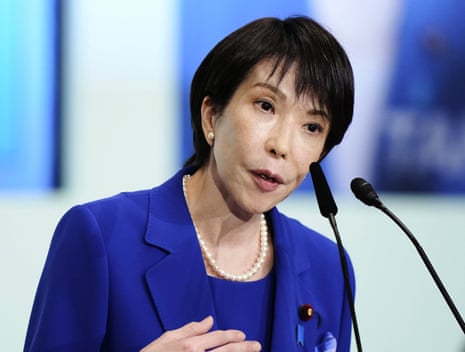Japan’s parliament has officially elected Sanae Takaichi as the nation’s 104th Prime Minister on Tuesday, October 21, 2025.
This achievement makes her the first woman to ever hold Japan’s top government post.
Takaichi, a 64-year-old political veteran and an ultraconservative stalwart of the ruling Liberal Democratic Party (LDP), secured the premiership after successfully navigating a period of political instability and forging a crucial coalition deal.
The 64-year-old won a clear majority on Tuesday – 237 votes in the powerful Lower House and another 125 in the Upper House – as leader of the ruling Liberal Democratic Party (LDP).
Takaichi, an ultraconservative leader of the Liberal Democratic Party (LDP) secured the top post after a coalition deal with the right-wing Japan Innovation Party (Ishin no Kai).
A follower of ‘Abenomics’
First elected to parliament from her hometown of Nara in 1993, Sanae Takaichi has served in key party and government posts, including minister of economic security, internal affairs, and gender equality.
A woman holds balls of rice to the camera.
Amid severe shortages and pressure from Donald Trump’s “reciprocal tariffs”, Japan is under unprecedented pressure to eat more foreign rice. Here’s why that’s controversial.
She supports aggressive monetary easing and big fiscal spending, echoing the economic policies of her political mentor, assassinated ex-prime minister Shinzo Abe.
On tariffs, she told a panel discussion this month that she would not shy away from pushing for renegotiations with the US if the deal is implemented in a way deemed harmful or unfair to Japan.
She has also voiced her strong concerns about crime and the economic influence of foreigners in Japan, calling for stricter rules — a move analysts say is an attempt to regain voters who fled from the LDP to the anti-immigration and nationalist party, Sanseito.
Revisionist views of war history
A former economic security minister, Sanae Takaichi has in the past been a vocal critic of China and its military build-up in the Asia-Pacific.
She’s also been a regular visitor to the Yasukuni Shrine, which honours convicted war criminals along with 2.5 million war dead and is seen by Asian nations as a symbol of Japan’s militarist past.
However, during the most recent LDP race, she notably softened her rhetoric — a sharp contrast to the vote last year when she pledged to visit Yasukuni as prime minister and ultimately lost to outgoing premier Shigeru Ishiba.
Political watchers say her revisionist views of Japan’s wartime history may complicate ties with Beijing and Seoul.
Her hawkish stance is also a worry for the LDP’s longtime partnership with Komeito, a Buddhist-backed moderate party.
While she has said the current coalition is crucial for her party, she says she is open to working with far-right groups.
Iron Lady 2.0
Once a drummer in a college heavy metal band, Sanae Takaichi looks to the late British prime minister Margaret Thatcher as her political hero.
Women comprise only about 15 per cent of Japan’s lower house, the more powerful of the two parliamentary chambers, and only two of Japan’s 47 prefectural governors are women.
Her election “would be a step forward for women’s participation in politics” but she has shown little inclination to fight against patriarchal norms, said Sadafumi Kawato, professor emeritus of the University of Tokyo.
She opposes revising a 19th-century law requiring married couples to share the same surname, a rule that overwhelmingly results in women taking their husband’s name.
Takaichi also recently acknowledged her struggles with menopausal symptoms and stressed the need to educate men about female health to help women at school and work.





